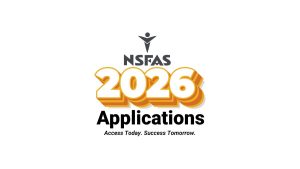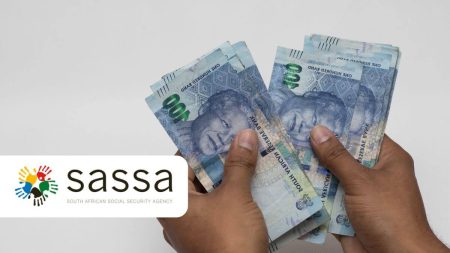With food and petrol prices steadily rising, many SASSA beneficiaries are feeling the strain as their limited resources struggle to keep up with the increasing cost of living.
With the new year underway, many beneficiaries are asking: Will there be a SASSA grant increase in 2025?
This article explores potential changes, taking into account historical trends, economic conditions, and government priorities. However, it is important to note that this is not an official statement from SASSA. The information presented here is an estimate based on past patterns and expert predictions.
Why a SASSA Grant Increase Is a Must
In recent years, beneficiaries of SASSA grants have faced mounting financial pressure due to inflation and rising costs. The prices of food, transport, and other essential goods have steadily increased, leaving many households struggling to stretch their grants to cover all their needs.
Social grants, including the Old Age Grant, Disability Grant, and Child Support Grant, are vital in alleviating poverty and supporting families. Without a SASSA grant increase, beneficiaries would find it even harder to afford basic necessities.
Predictions for 2025 SASSA Grant Increases
If historical trends are followed, it is likely that SASSA grants will see modest increases in 2025. These adjustments typically aim to ensure that beneficiaries maintain their purchasing power despite inflation.
Estimated Increases for 2025
Based on trends observed in previous years, here is a speculative estimate of what increases could look like:
- Older Persons Grant (Ages 60–74):
- Current Amount: R2,190
- Predicted Increase: R2,290–R2,310
- Older Persons Grant (Ages 75 and above):
- Current Amount: R2,210
- Predicted Increase: R2,310–R2,330
- Disability Grant:
- Current Amount: R2,190
- Predicted Increase: R2,290–R2,310
- War Veterans Grant:
- Current Amount: R2,190
- Predicted Increase: R2,290–R2,310
- Care Dependency Grant:
- Current Amount: R2,190
- Predicted Increase: R2,290–R2,310
- Child Support Grant:
- Current Amount: R530
- Predicted Increase: R550–R560
- Foster Care Grant:
- Current Amount: R1,180
- Predicted Increase: R1,200–R1,250
These estimates reflect a potential increase of approximately R10 to R100, depending on the type of grant. However, the actual figures will depend on the government’s priorities and available resources.
Related: What to Do If Your SASSA Payment Does Not Reflect in Your Bank Account in 2025
What Influences SASSA Grant Adjustments?
SASSA grant adjustments are influenced by several critical factors that impact the overall cost of living and the government’s ability to support vulnerable citizens. These adjustments are crucial in ensuring that beneficiaries can continue to meet their daily needs despite economic challenges. Let’s dive deeper into the key factors:
1. Inflation
Inflation is one of the most significant factors influencing SASSA grant increases. Inflation occurs when the prices of goods and services rise, reducing the purchasing power of money. For grant beneficiaries, this means that even the same grant amount buys less over time.
In South Africa, inflation rates are driven by various factors, including:
- Rising Food Prices: Food is often the largest expense for grant recipients. As prices for staples like bread, maize, and vegetables increase, beneficiaries find it harder to afford basic groceries.
- Energy Costs: Rising electricity tariffs and fuel prices contribute to inflation, making daily living more expensive.
- Imported Goods: The weakening of the Rand against major currencies can increase the cost of imported goods, further driving up inflation.
To help grant recipients manage these rising costs, the government typically adjusts grant amounts annually, ensuring they keep pace with inflation to some extent.
2. Economic Climate
The overall state of the economy plays a significant role in determining whether there will be a SASSA grant increase and by how much. In a struggling economy, the government faces financial constraints, which may limit the size of grant increases. Conversely, a stronger economy may allow for more generous adjustments.
Key economic factors affecting grant increases include:
- GDP Growth: When the economy grows, the government collects more revenue through taxes, creating more room in the budget for social spending.
- Unemployment Rates: High unemployment increases the demand for social grants, placing additional pressure on the budget.
- Debt Levels: South Africa’s national debt impacts how much money is available for social spending. If debt levels are high, the government may need to cut spending in other areas to fund grants.
During periods of economic hardship, grant increases may not fully match inflation, leaving beneficiaries with less purchasing power.
3. Government Budget
The national budget is the primary tool the government uses to allocate resources, including funding for SASSA grants. Each year, the Finance Minister presents the budget speech, which outlines the government’s spending priorities and sets the tone for SASSA grant adjustments.
Key aspects of the budget process include:
- Revenue Projections: The government assesses how much money it expects to collect through taxes, customs duties, and other sources.
- Spending Priorities: Social grants compete with other critical areas like healthcare, education, and infrastructure for funding. The government must balance these priorities when deciding on grant increases.
- Budget Deficits: If the government’s planned expenditure exceeds its revenue, it may need to borrow money, which could limit the scope of grant increases.
The budget speech typically takes place in February or March, and it’s during this time that the government announces any changes to grant amounts. Beneficiaries eagerly await these announcements as they provide clarity on whether there will be a SASSA grant increase for the year.
4. Public Pressure and Social Needs
Public opinion and the needs of South Africa’s most vulnerable citizens also influence grant adjustments. With millions of people relying on social grants for survival, there is significant pressure on the government to ensure these grants remain adequate.
Key factors include:
- Protests and Advocacy: Civil society groups and community leaders often lobby the government for higher grant increases, citing the challenges faced by beneficiaries.
- Population Growth: As the number of beneficiaries increases, the government must allocate additional resources to meet the growing demand for social grants.
- Poverty and Inequality: Social grants are a key tool for reducing poverty and inequality in South Africa. Any delay or insufficient increase in grants can worsen living conditions for vulnerable groups.
5. Global Factors
South Africa’s economy is not isolated from global events. International factors, such as rising oil prices, global inflation, or geopolitical conflicts, can impact the availability of resources for a SASSA grant increase. For example:
- Oil Prices: Rising oil prices increase fuel and transport costs, driving inflation in South Africa.
- Global Supply Chains: Disruptions to supply chains, as seen during the COVID-19 pandemic, can lead to shortages and price increases for essential goods.
- International Aid and Loans: South Africa occasionally relies on international financial institutions like the International Monetary Fund (IMF) for funding. The terms of these loans may influence how much the government can allocate to social grants.
How These Factors Impact Beneficiaries
The combination of these factors determines whether beneficiaries will receive a SASSA grant increase and how much that increase will be. When grants fail to keep pace with inflation or economic challenges, beneficiaries may face difficult choices, such as:
- Cutting back on essential items like food or electricity.
- Delaying medical care or school expenses for children.
- Borrowing money to make ends meet, leading to debt.
Understanding these influences helps beneficiaries and the public appreciate the complex decisions involved in adjusting social grants.
When Will the SASSA Grant Increase Be Announced?
The Finance Minister usually announces changes to social grants during the national budget speech, which typically occurs in February or March. If a SASSA grant increase is approved for 2025, it is expected to take effect in April, with a possible second adjustment in October.
Beneficiaries should stay informed by following SASSA’s official website and social media platforms for updates.
Read This: SASSA Means Test: How to Check If You Qualify for a Social Grant in South Africa
What to Do While Awaiting Official Updates
While awaiting an official announcement, beneficiaries can take the following steps:
- Plan Your Budget: Use the current grant amounts as a baseline while factoring in potential increases conservatively.
- Stay Informed: Follow trusted news sources and official SASSA updates for accurate information.
- Avoid Scams: Be cautious of fake news or unauthorized messages claiming to offer details about grant increases.
Disclaimer
This article is not an official communication from SASSA. It is based on historical trends, predictions, and economic analysis. The actual grant adjustments for 2025 will only be confirmed once announced by the South African government.










